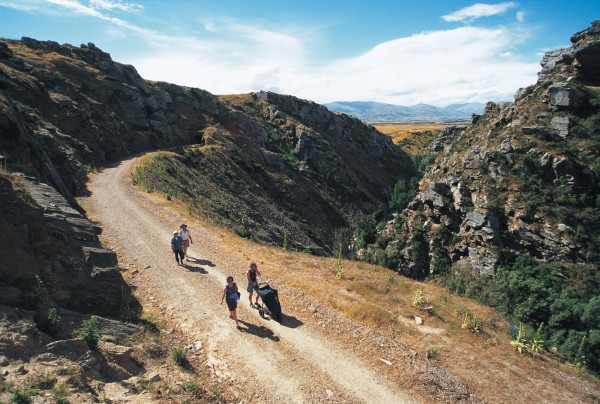If you just enjoy walking and are reasonably fit, you may want to consider walking the Trail, or a part of it – you could also organise a walk on the Trail as an interesting keep-fit exercise for a sports group or social club, or to prepare for a tramping trip.
How long will it take?
This depends on how fast you walk – the average walking rate is 4 to 6 kph. You will also have to decide how many hours a day you want to be walking. Most walkers allow at least 6 – 7 days to cover the whole 152 km Trail, which would involve walking for 4 -5 hours and covering between 21 and 25 km every day.
You may just want to select one or a few popular parts of the Trail to walk. Or, if you choose to walk the whole distance, you may be able to arrange for family/friends to drop you off and pick you up at arranged places. But if you are going to walk independently, you will need to plan your sections and overnight stops carefully. Trail operators can arrange to transfer your main luggage to accommodation.

Use the following distance chart to plan your daily journey:
* Clyde Railhead to Alexandra (8 km)
* Alexandra to Chatto Creek (17 km)
* Chatto Creek to Omakau (12 km)
* Omakau to Lauder (7 km)
* Lauder to Auripo to Oturehua (22.5 km)
* Oturehua to Wedderburn (12 km)
* Wedderburn to Ranfurly (13.5 km)
* Ranfurly to Waipiata (8 km)
* Waipiata to Kokonga (10 km)
* Kokonga to Hyde (14.5 km)
* Hyde to Rock and Pillar (14 km)
* Rock and Pillar to Middlemarch (13.5 km)
Some sections are longer, with limited services. Between Hyde and Middlemarch (27.5 km) there are no shops and accommodation, but some Trail operators and accommodation providers can arrange to pick you up.
Seasonal temperatures should be considered in your daily plan – it could get unpleasant walking in the middle of a hot day in midsummer, while early mornings and late afternoons can be extremely cold on a frosty winter day – water bottles have been known to freeze!
However, walkers who have done the track in winter rave about the winter wonderland scenery, with a backdrop of snow on the hills. Because the sun is lower in the sky, the changing effects of light at different times of day can be mesmerising, so take your camera.
Some stretches of the Trail are exposed and have little shelter, so take plenty of water and snacks. It’s always nice to have the wind behind you, but although the prevailing wind tends to come from the west, conditions are variable and cannot always be predicted for every part of your trip. Be prepared with plenty of long walks before your trip. The track is made of hard, compacted gravel, so your feet will get more tired than if you were on a bike – but this gives you more excuses to sit down and enjoy the countryside.

